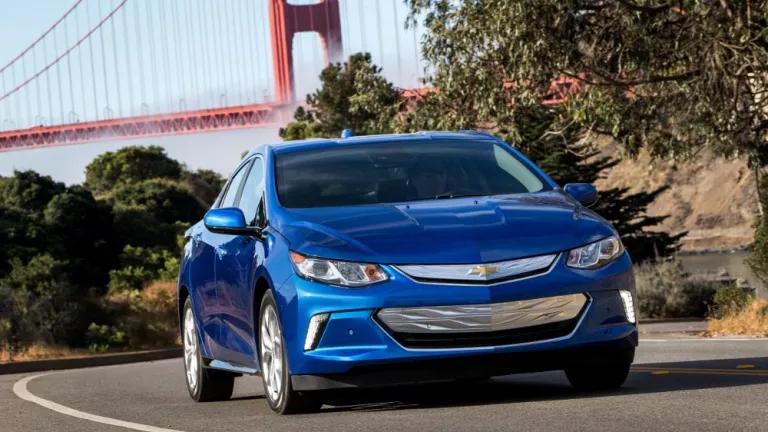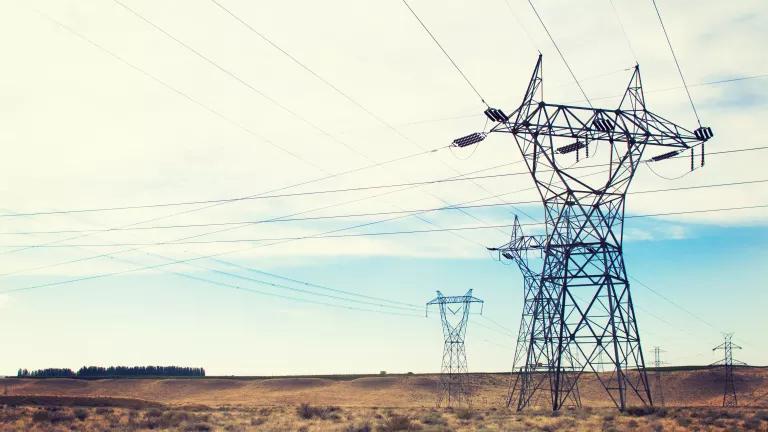Agreement Proposed to Deploy Charging Stations for Electric Cars in Northern and Central California

One of the nation's largest utilities, Pacific Gas & Electric (PG&E), would deploy 7,500 charging stations for electric vehicles (EVs) throughout northern and central California and educate its millions of customers about the benefits of driving on electricity, a fuel that's cheaper and cleaner than gasoline, under a settlement agreement proposed today at the California Public Utilities Commission.
If approved, the proposed deal would build upon programs the commission recently authorized for Southern California utilities. Together, these programs will help California meet its goal of deploying 1.5 million EVs by 2025 and challenge the monopoly enjoyed by Big Oil for far too long, in line with laws recently enacted in both California and Oregon that direct utilities to electrify the transportation sector.
Just like in trial courts, if consensus can be reached between interested parties at the Public Utilities Commission, those parties can propose a deal that, if approved by the court (or in this case, the commission), avoids the need for a long and adversarial process. The "Charge Smart and Save" program proposed today improves upon, and replaces, all previous proposals by PG&E.
Like the Southern California Edison (SCE) and San Diego Gas & Electric (SDG&E) EV charging station settlements recently approved with some modifications by the Public Utilities Commission, the Charge Smart and Save settlement enjoys broad support. Signatories include: PG&E, the Alliance of Automobile Manufacturers, American Honda Motor Co., Inc., the Center for Sustainable Energy, the Coalition of California Utility Employees, Greenlots, The Greenlining Institute, Marin Clean Energy, the Natural Resources Defense Council, Plug In America, General Motors LLC, Sierra Club, and the Sonoma Clean Power Authority.
All three programs aim to educate customers as to the benefits of driving on electricity and fill a need for charging infrastructure at workplaces, apartment complexes, and other locations where cars are parked for most of the day. This combination should tap pent-up demand for EVs outside of single-family homes, increase the number of miles driven on electricity, and ensure that cars are plugged in when solar and wind generation peak.

Combined, the SCE and SDG&E programs will deploy 5,000 charging stations in Southern California over the next several years, to inform full scale deployments in the future. Likewise, the PG&E settlement would deploy 7,500 standard charging stations and 100 "DC Fast Chargers" in northern and central California over three years, with a goal of using the lessons learned to improve future, larger scale deployments needed to comply with state law.
The PG&E program would have a hard budget cap of $160 million and raise customer bills by less than 0.2 percent, a rate impact that is less than what the commission approved for SDG&E. Furthermore, those estimated rate impacts do not account for the downward pressure on electricity prices that will occur from widespread transportation electrification that takes advantage of spare capacity in the electrical grid. Analysis conducted by the Pacific Northwest National Laboratory suggests that a mass market for EVs could lower electric rates by about 20 percent. Nor do those rate impact estimates account for the considerable fuel cost savings families will enjoy when they ditch the gas pump and plug in to cleaner electricity.
As with the recently approved SDG&E program, PG&E would own the charging stations to ensure their reliability and to provide EV drivers electricity that's cheaper than gas. Likewise, both utilities intend to work with independent EV charging companies to install and operate the stations, and provide customers with a choice of charging equipment and services. While the PG&E program shares many other features of the SDG&E program, it is distinct from both the SCE or SDG&E programs because it will:
- Deploy DC Fast Chargers, which can enable intercity travel for pure battery electric vehicles by fully recharging cars in the time it takes their drivers to grab a bite to eat;
- Use simpler time-of-day prices than the dynamic prices used by SDG&E to ensure EV drivers save money on fuel and charge their cars when there is an abundance of wind and solar energy;
- Evaluate more sophisticated, "set-and-forget" technologies to manage EV charging to be implemented at scale in future programs;
- Deploy at least 50 percent more charging stations in disadvantaged communities on a percentage basis than either the SCE or SDG&E programs, with a stretch goal of doubling deployment in those communities relative to the SCE or SDG&E programs;
- Fund an additional $5 million in complementary and innovative programs to increase access to clean transportation in low-income and disadvantaged communities; and
- Work with Community Choice Aggregators (CCAs), such as Marin Clean Energy and Sonoma Clean Power Authority, to accelerate the electric vehicle market.
By increasing access to reliable and affordable charging stations, the Charge Smart and Save program promises to deliver Californians cleaner air and cheaper fuel. By matching EV charging to hours of the day when wind and solar generation are plentiful, the program will also lower the costs of meeting California's goal of procuring at least half of its electricity from renewable resources by 2030.



